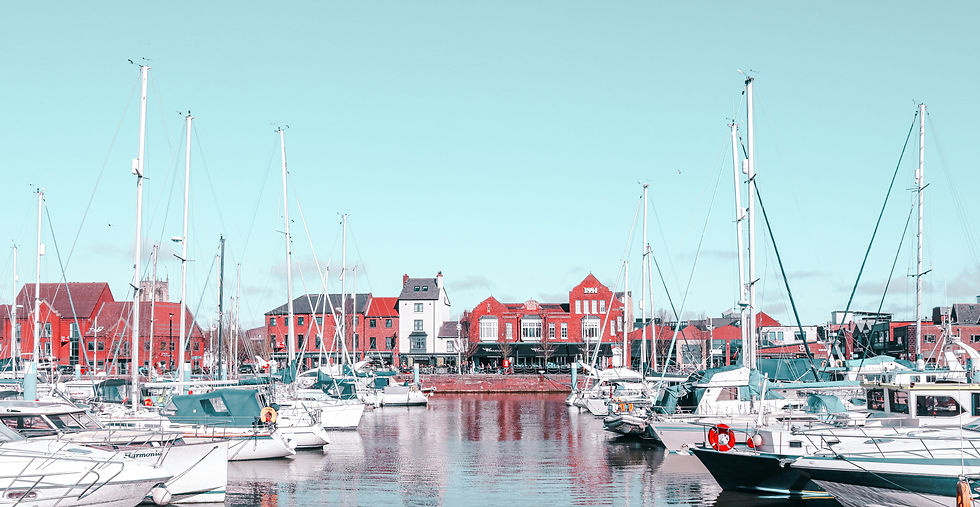Urban Development in Denmark: A Model for the Future
- Thinking Urban

- 6. nov.
- 4 min læsning
Opdateret: for 22 timer siden
Embracing Sustainability in Modern Urban Development
Sustainability is at the heart of Denmark’s urban transformation. Cities like Copenhagen and Aarhus have become global examples of how to integrate green infrastructure into urban environments. One standout project is the Copenhagen Climate Resilient Neighborhood, which focuses on managing stormwater through innovative design. Instead of relying solely on underground pipes, the project uses open canals, green roofs, and permeable surfaces to absorb rainwater. This reduces flood risks and creates pleasant public spaces.
This approach not only addresses climate challenges but also promotes biodiversity and community engagement. Residents enjoy parks and waterways that double as recreational areas, fostering a stronger connection to nature within the city.
Key features of sustainable urban development in Denmark include:
Use of renewable energy sources such as wind and solar power.
Integration of green spaces and urban forests.
Promotion of cycling and pedestrian-friendly infrastructure.
Implementation of smart water management systems.
These elements combine to create cities that are resilient, healthy, and enjoyable to live in.

Innovative Housing Solutions Driving Urban Growth
Denmark’s modern urban development also focuses on innovative housing projects that address affordability, community, and environmental impact. One notable example is the 8 House in Copenhagen, designed by Bjarke Ingels Group (BIG). This mixed-use development combines residential, commercial, and recreational spaces in a figure-eight layout that encourages social interaction and accessibility.
The 8 House features:
A continuous ramp that connects all levels, promoting walking and cycling.
Diverse housing types to accommodate different family sizes and lifestyles.
Energy-efficient building materials and systems.
Shared community spaces such as gardens and playgrounds.
This project exemplifies how thoughtful design can create vibrant neighborhoods that meet modern needs while reducing environmental footprints.

Urban Design Projects Influencing Denmark’s Cityscapes
Denmark’s reputation for excellence in urban design is supported by numerous urban design projects that prioritize human-centered development. These projects often emphasize walkability, mixed-use zoning, and public transportation connectivity. For instance, the Superkilen Park in Copenhagen’s Nørrebro district is a vibrant public space that celebrates cultural diversity through its design elements sourced from around the world.
Superkilen includes:
Colorful installations and street furniture representing different cultures.
Open spaces for markets, performances, and social gatherings.
Bicycle paths and pedestrian zones that connect neighborhoods.
This project demonstrates how urban design can foster inclusivity and community pride while enhancing the urban experience.
Revitalizing Waterfronts for Public Use
Waterfront areas in Denmark have undergone significant transformations, turning former industrial zones into lively public spaces. The Aarhus Docklands project is a prime example of this trend. Once a busy port, the area has been redeveloped into a sustainable urban district featuring modern housing, offices, and recreational facilities.
Key aspects of the Aarhus Docklands include:
Energy-neutral buildings with solar panels and efficient insulation.
Public promenades and parks along the waterfront.
Integration of cultural venues and cafes to attract visitors.
Emphasis on pedestrian and bicycle accessibility.
This revitalization not only boosts the local economy but also reconnects citizens with their maritime heritage.
Enhancing Mobility with Smart Infrastructure
Modern urban development in Denmark also prioritizes smart mobility solutions to reduce congestion and pollution. Cities are investing in extensive cycling networks, electric public transport, and digital systems that optimize traffic flow. The Cityringen Metro in Copenhagen is a recent addition that enhances connectivity across the city, making it easier for residents to commute without relying on cars.
Features of smart mobility initiatives include:
Real-time transit information accessible via mobile apps.
Integration of bike-sharing programs with public transport.
Infrastructure supporting electric vehicles and charging stations.
Urban planning that encourages mixed-use development to reduce travel distances.
These efforts contribute to a cleaner, more efficient urban environment.
Inspiring Future Urban Development in Denmark
Denmark’s transformative urban design projects offer valuable insights for cities aiming to balance growth with sustainability and livability. By focusing on green infrastructure, innovative housing, cultural inclusivity, waterfront revitalization, and smart mobility, Danish cities are setting new standards for modern urban development.
For planners and developers, the key takeaways include:
Prioritize sustainability in all aspects of design and construction.
Engage communities to ensure projects meet local needs and foster social cohesion.
Integrate multiple functions within urban spaces to create vibrant, dynamic neighborhoods.
Leverage technology to improve mobility and resource management.
Celebrate cultural diversity through inclusive and creative design.
These principles can guide future projects to create cities that are not only functional but also inspiring places to live and work.

By learning from Denmark’s experience, urban developers worldwide can contribute to building cities that are resilient, sustainable, and deeply connected to their communities.
Conclusion: A Vision for Urban Living
Denmark's urban development serves as a beacon for cities globally. The blend of sustainability, innovation, and community engagement creates a unique urban experience. As cities face challenges like climate change and population growth, the lessons from Denmark are invaluable. Embracing these principles can lead to more livable, resilient urban spaces that benefit everyone.
In summary, Denmark’s approach to urban planning is not just about buildings and infrastructure. It's about creating a holistic environment where people can thrive, connect, and enjoy their surroundings. The future of urban living is bright, and Denmark is leading the way.



Kommentarer